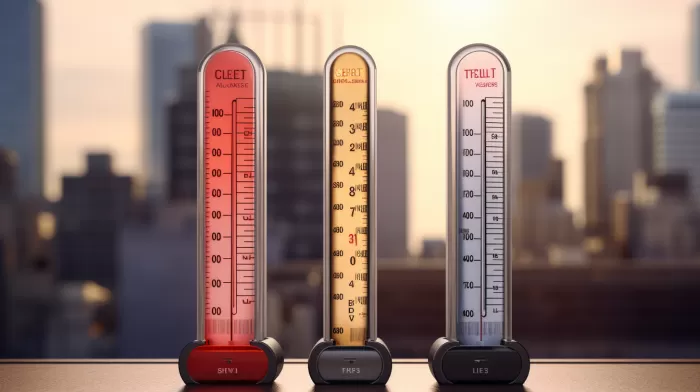If you live in an area that experiences significant temperature fluctuations, you may find that your life expectancy is shortened. Studies conducted by the Harvard School of Public Health (HSPH) have found that even small changes in summer temperature swings of about 2°F can lead to a shortened life expectancy for elderly individuals with chronic medical conditions. This could result in thousands of additional deaths each year. Although prior research has examined the short-term effects of heat waves, this is the first study that looks at the long-term impacts of changing climate conditions on life expectancy.
The Effects of Temperature Variability on Mortality
Until now, the effects of temperature patterns on long-term mortality were unclear. Researchers at HSPH found that high day-to-day variability in summer temperatures, regardless of heatwaves, shortens life expectancy for susceptible individuals.
The study discovered that when there were larger summer temperature swings within each city, death rates increased. A 2°F increase in summer temperature variability led to higher death rates for elderly individuals with chronic conditions. Mortality risk increased by 4% for people with diabetes, 3.8% for those with a history of heart attacks, 3.7% for individuals with chronic lung disease, and 2.8% for people suffering from heart failure. The researchers estimate that increased summer temperature variability in the US alone could result in over 10,000 additional deaths per year.
Adapting to Climate Fluctuations
According to Joel Schwartz, professor of environmental epidemiology at HSPH, people adapt to the usual temperature in their city. This is why there aren’t higher mortality rates in Miami compared to Minneapolis, despite the higher temperatures. However, people don’t adapt as well to increased fluctuations around the typical temperature. As the population continues to age and the prevalence of chronic conditions such as diabetes increases, temperature fluctuations due to climate change could cause public health problems to grow in the future.
Ways to Mitigate Temperature Variability in Your Home
While we might not be able to control the weather outside, there are ways to minimize the impacts of temperature fluctuations within our living spaces. Here are some tips on how you can maintain a more consistent temperature in your home:
- Use a programmable thermostat: A programmable thermostat will help you maintain a consistent temperature by adjusting your home’s heating and cooling systems to preset temperatures throughout the day. This can help you avoid large temperature swings that can exacerbate health problems.
- Seal drafts: Make sure to seal any gaps around windows, doors, and other openings in your home to keep the cold air out and the warm air in. This will help maintain a more consistent temperature indoors and minimize the health risks associated with fluctuating temperatures.
-
Use energy-efficient insulation: Make sure your home is properly insulated to reduce heat transfer and maintain a consistent indoor temperature. Energy-efficient insulation can also help lower your energy bills.
-
Use thermal curtains or blinds: Installing thermal curtains or blinds can help keep the heat in during winter, while blocking out heat during the summer. This will help provide a more constant temperature inside your home.
-
Regularly maintain your heating and cooling system: Make sure your heating and cooling system is well-maintained and functioning properly to prevent unanticipated temperature fluctuations. Regular maintenance can also help maximize efficiency and save on energy costs.
Taking these simple steps can help create a more stable and comfortable environment for individuals who may be at a higher risk due to temperature fluctuations. Remember, climate change can impact anyone – by focusing on maintaining a steady temperature in our homes, we can help protect those most vulnerable to its effects.



